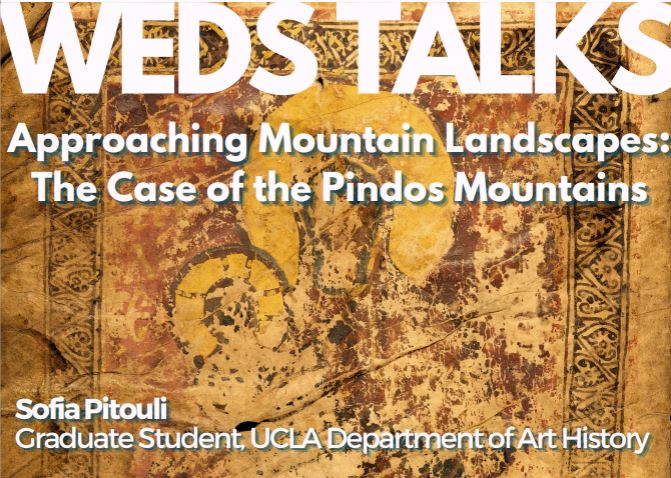Past Events
Interested in Cotsen events? Sign up for our mailing list.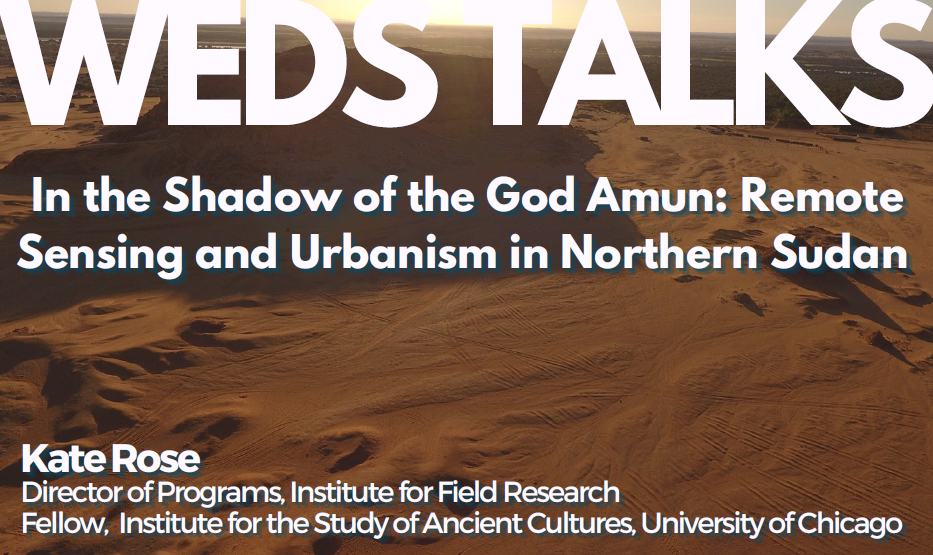
ABSTRACT: This presentation investigates urbanism and settlement patterns through multiple lines of remote sensing data in Northern Sudan. The site of Jebel Barkal, located 400 km from Khartoum, near the Nile, is known for its elite palaces, temples, and pyramids. The site served as the royal capital of Kush from the 8th century BCE and remained a major urban and religious center throughout the Meroitic Period. Recently a Meroitic settlement was identified, known as the “East Mound.” Since 2018 the Jebel Barkal Archaeological Project, in collaboration with the National Corporation for Antiquities and Museums of Sudan, has been excavating and surveying areas of the East Mound. This talk will present preliminary results of a new project aimed at analyzing LiDAR and thermal imagery data. The LiDAR and the thermal imagery extend beyond the East Mound into the modern dense and lush agricultural fields adjacent to the Nile. The data will allow us to more accurately map the settlement’s spatial extent and situate it within its broader landscape context. Objectives also include identifying any previously undocumented features such as architecture, activity areas, and paleochannels. This work contributes to our understanding of how major Kushite cities grow, evolve, and respond to environmental factors throughout their life histories. Lastly, this project ruminates on the impact of archaeological inquiry in Sudan, which is currently experiencing a civil war after years of political unrest, while centering Sudanese voices and local archaeologists.
BIO: Kate Rose is an anthropological archaeologist, specializing in landscape analysis and ancient urbanism in the Near East and North Africa. Her PhD dissertation at Harvard University is a comparative spatial analysis of Kushite royal cemeteries in Northern Sudan. As a researcher with the ERC DiverseNile Project at Ludwig-Maximilians-Universität in Munich, Germany from 2022 to 2024, she investigated landscape changes during the Bronze Age borderspace of the Attab to Ferka region. She has also held numerous lectureships and teaching positions at Harvard University and Boston University, and is interested in the intersection of pedagogy and fieldwork. She has served in various leadership positions on projects in Sudan, Egypt, Jordan, Turkey, and Spain. She is currently the Director of Programs at the Institute for Field Research, and a Fellow with the Center for Ancient Middle Eastern Landscapes at the Institute for the Study of Ancient Cultures, University of Chicago.
Contact Sumiji Takahashi
Email sutakahashi@ioa.ucla.edu
Phone 310-825-4169
The Andean Working Group presents "Beyond the Horizon: Pericentric Complexity in the Chavín Phenomenon at Atalla, Peru" by Dr. Michelle Young, Assistant Professor in the Department of Anthropology at Vanderbilt University.
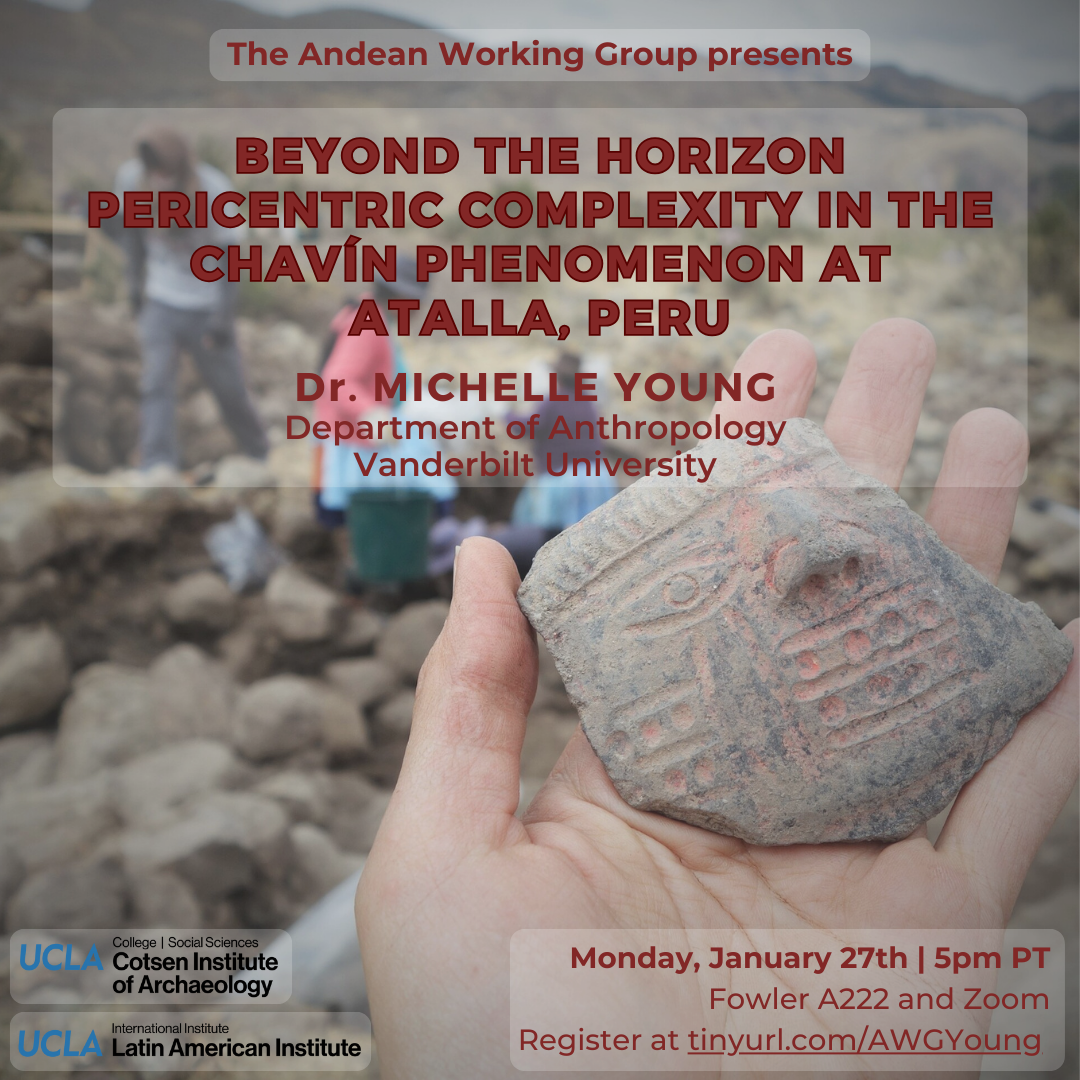
Registration is required for in-person and virtual participation.
Register at tinyurl.com/AWGYoung
This event is co-sponsored by the UCLA Latin American Institute and the Cotsen Institute of Archaeology.
Contact Gabriel Silva Collins
Email gsilvacollins@g.ucla.edu
Phone
ABSTRACT: An imperial document (chrysobull), issued in 1289 by Byzantine Emperor Andronikos II Palaiologos, confirms the privileges granted to a monastic foundation known as the Merciful Virgin in Phanari, Karditsa. The monastery was established by the sebastokratorissa Hypomone, a nun of Vlach origin who came from the transhumant nomadic group that moved between the Pindos Mountains and the Thessalian plateau. While only fragments of her monastic foundation survive today, this imperial document, read together with material evidence, offers insights into the overlapping landscapes between lowlands and uplands in the thirteenth century.
BIO: Sofia is a PhD candidate in the Department of Art History at UCLA. Her dissertation, “The Pindos Mountains: Land, Art, Community (13th-15th centuries),” explores how mountainous communities interacted with land by analyzing settlement and mobility patterns and artistic and social interactions across mountains and surrounding plains. She has received fellowships from the CMRS Center for Early Global Studies, the UCLA Stavros Niarchos Center for Hellenic Studies, Dumbarton Oaks, and the Mellon Foundation. She is the co-editor of the catalogue Weaving Dreams: Kilims from Geraki, Laconia, and has published articles on medieval soundscapes and communities.
Contact Sumiji Takahashi
Email sutakahashi@ioa.ucla.edu
Phone 310-825-4169
The statue-stelae of Early Iron Age Daunia (north Apulia, Italy), a group of stone slabs, are each incised to represent the garb and accoutrements of a person. They detail the clothing and adornment worn by men and women in full regalia, plus, through additional figurative images drawn on the robes, show ritual practices, everyday activities, and scenes of local legend. As such, they offer an unparalleled window into the lives of a proto-historic people, providing a rich source of self-representation for what is otherwise a fairly poorly understood society. Grounded in the scholarship of post-colonial and gender archaeology, this book pays full respect to the agency of indigenous communities and the important role of women. It considers the stelae not through a Hellenic lens, but in the Italo-Adriatic context to which they belong. This is the first time an in-depth, holistic study of the Daunian stelae has been undertaken, and the first presentation of the material in English.
6pm Lecture
7pm Reception
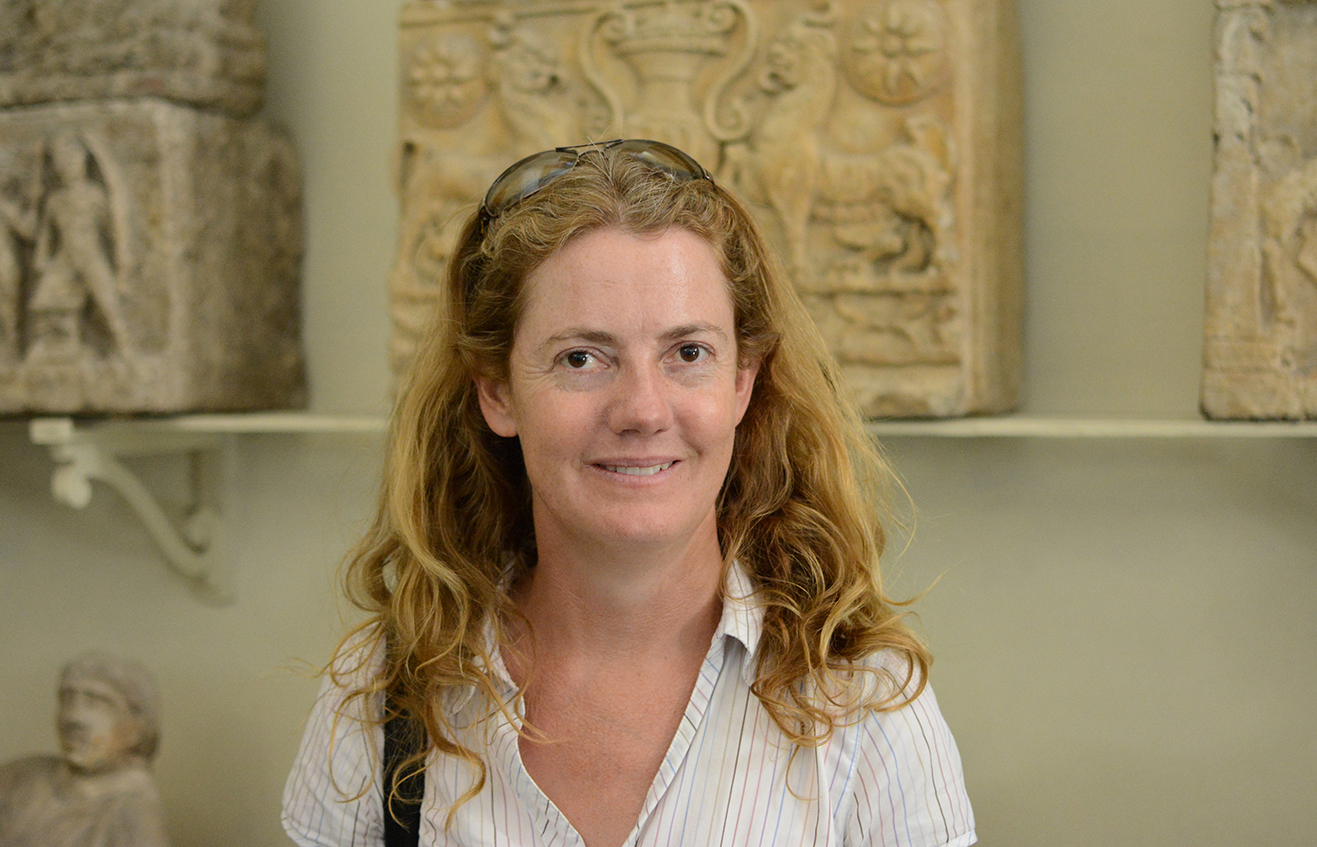
Camilla Norman is an archaeologist based at the University of Sydney whose particular interest is the Early Iron Age central Mediterranean. She was for many years the Project Officer of the Australian Archaeological Institute at Athens and has held post-doctoral positions in Italy (The British School in Rome) and England (The Institute of Cultural Studies, London University). She has worked on sites throughout central and southern Italy, mainland Greece, Jordon and Australia, as an excavator, illustrator and finds specialist.
Contact Michelle Jacobson
Email mjacobson@ioa.ucla.edu
Phone
Andean Working Group is pleased to announce Dr. Vladimir Gil Ramón's talk titled "Andean Environmental Conflicts, Risks, Disaster, and Development in the Anthropocene." Dr. Gil Ramón is a faculty member in the Department of Social Sciences and Environmental Development Master's Program at PUCP (Pontificia Universidad Católica del Perú). His research explores relationships between mining industries, the nation-state, and environmental risk, with publications including the 2020 book Fighting for Andean Resources. This AWG talk is an event rescheduled from its original Spring 2024 date.
If you would like to attend this event, please register at the following link: https://tinyurl.com/yc85rb6w
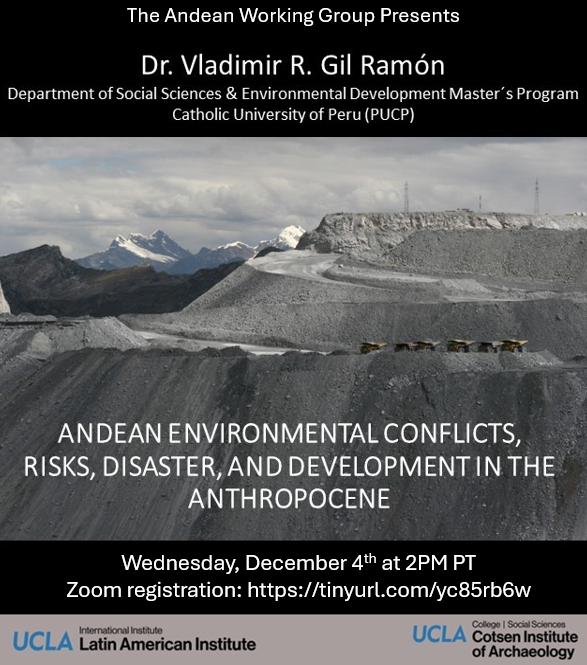
Contact Gabriel Silva Collins
Email gsilvacollins@g.ucla.edu
Phone
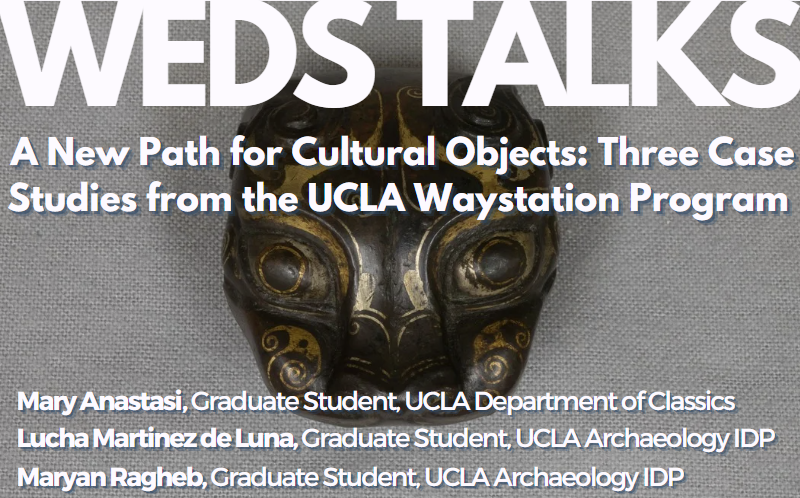
ABSTRACT: In 2023, the Cotsen Institute of Archaeology debuted its new graduate certificate in Cultural Heritage Research, Stewardship, and Restitution as part of the Waystation Initiative, which organizes and facilitates ethical returns of international archaeological and ethnological objects to the nation or community of origin. In this presentation, Lucha Martinez de Luna, Maryan Ragheb, and Mary Anastasi share the results from their first year working with Waystation. By combining provenance and art historical research with material analysis, they were able to compile object histories for various cultural objects from ancient China to reconstruct the life history of these objects. In the future, these and other cultural heritage artifacts will be returned to Shandong University in China, accompanied by provenance information obtained through our work with the Waystation. .
BIOS: Mary Anastasi is a PhD candidate in the Classics department at UCLA. Her research interests include philosophy, rhetoric, Imperial Greek literature, and epistolography, and she regularly teaches courses in Classics and Ancient Greek. Mary completed the Waystation certificate in the spring of 2024.
Lucha Martinez de Luna is an a PhD candidate in archaeology at the Cotsen Institute of Archaeology focused on Mesoamerican and Contemporary Archaeology. She has participated in archaeological projects in the Southwestern U.S., the American West, and central and southern Mexico and curator of archaeological and historical museum collections. As the La Providencia Archaeological Project director and a visiting professor at the University of Science and Arts in Chiapas, Mexico, Lucha also leads the Chicano/a/x Murals of Colorado Project.
Maryan Ragheb is a PhD candidate in archaeology at the Cotsen Institute of Archaeology who works in ancient Egypt. Her dissertation addresses people’s interactions with their material culture during social change in ancient Egypt, focusing on body ornamentation production and practices. Maryan worked on different archaeological projects in Egypt and Ethiopia. For the Waystation Certificate Program, she worked on jade neolithic objects from China.
Contact Sumiji Takahashi
Email sutakahashi@ioa.ucla.edu
Phone 310-825-4169
The Architecture Working Group presents Earthen Architecture and Heritage Conservation: Case Studies from Spain with Camilla Mileto and Fernando Vegas López-Manzanares, Getty Conservation Institute Fellows, Professors of Architecture and Historic Preservation at the Universitat Politéchnica de València (UPV).
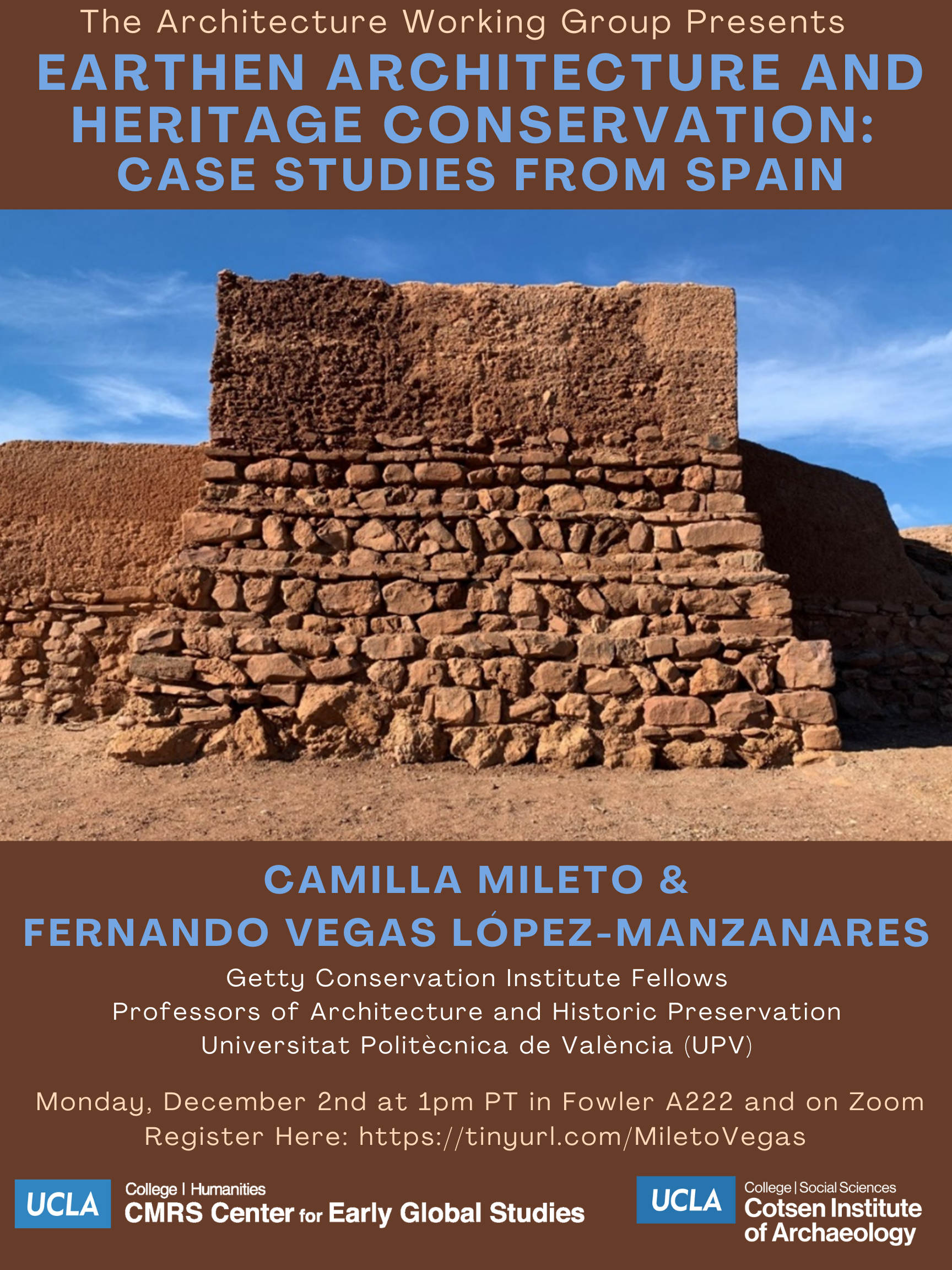
Contact Rachel Schloss
Email rachelschloss@g.ucla.edu
Phone
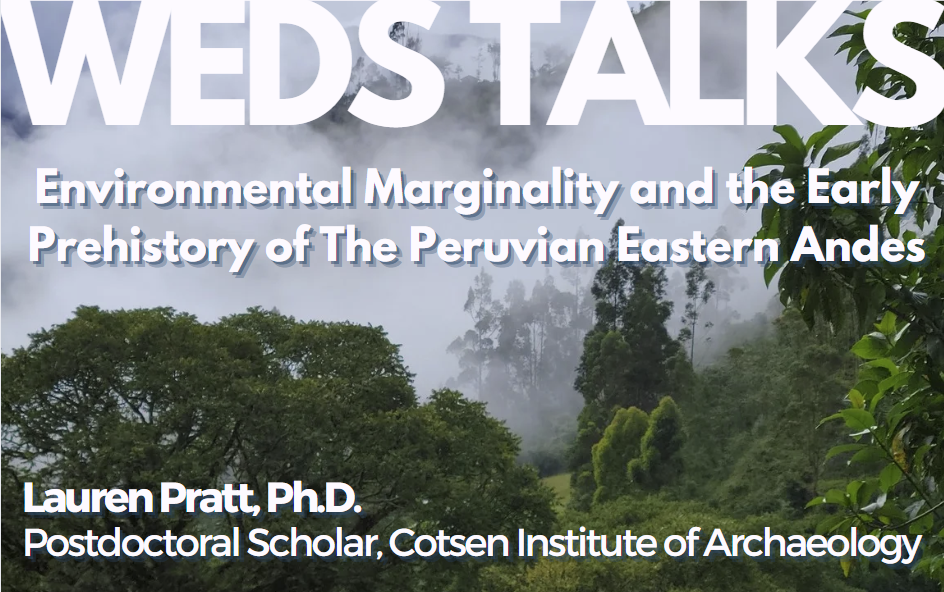
ABSTRACT: Archaeological models of human activity in the Peruvian eastern Andes prior to c. 1000 cal BP are enormously variable, ranging from near-total absence through selective or seasonal use to extensive local development and inter-regional exchange. Much of this disagreement is founded in competing evaluations of the environmental marginality of cloud forests and other eastern Andean environments for human occupation. As direct archaeological evidence of human activity from this place and time are scarce, evaluation of models has been difficult, relying largely on theory and indirect evidence from neighboring regions. In this talk, I present the results of the CARECH project, a multi-site archaeological survey and excavation initiative which offers insights into more than 4,000 years of human adaptation to, and modification of, eastern Andean environments, from Middle Holocene (c. 5,500 cal BP) foragers through the development of sedentary agriculturalism. Based on these results, the cloud forest appears to have been highly suitable for past human groups, who may also have modified the landscape to better suit their needs. In addition, I will discuss upcoming work in the cloud forests of southern Peru, designed to assess the role of the eastern Andes in facilitating highland-lowland interactions.
BIO: Lauren Pratt is a postdoctoral scholar at the Cotsen Institute of Archaeology. She received her doctoral degree from the University of Michigan in August 2024, with a dissertation titled "Human Ecology of the Early Prehistory of the Eastern Andes, Peru." She employs a variety of approaches, including human-behavioral ecology and niche construction, to understand human-environment interactions in the cloud forests and adjacent environmental settings at the intersection of South America's two defining landscapes: the Andes mountains and Amazon rainforest.
Contact Sumiji Takahashi
Email sutakahashi@ioa.ucla.edu
Phone 310-825-4169
 During WWII, over 125,000 people of Japanese ancestry were confined in camps across the United States. Three of these camps were built on Indigenous reservations—Gila River and Poston on the lands of the Gila River Indian Community and Colorado River Indian Community respectively, and the Old Leupp Citizen Isolation Center, a former boarding school on Navajo Nation land. In this talk I focus on the Gila River Incarceration Camp, where my family was incarcerated and where I have conducted archaeological research over the past 10 years. Gardens built by Japanese Americans at Gila River show the resilience and ingenuity of incarcerees as well as revealing imbricated layers of relationships with the landscape.
During WWII, over 125,000 people of Japanese ancestry were confined in camps across the United States. Three of these camps were built on Indigenous reservations—Gila River and Poston on the lands of the Gila River Indian Community and Colorado River Indian Community respectively, and the Old Leupp Citizen Isolation Center, a former boarding school on Navajo Nation land. In this talk I focus on the Gila River Incarceration Camp, where my family was incarcerated and where I have conducted archaeological research over the past 10 years. Gardens built by Japanese Americans at Gila River show the resilience and ingenuity of incarcerees as well as revealing imbricated layers of relationships with the landscape.
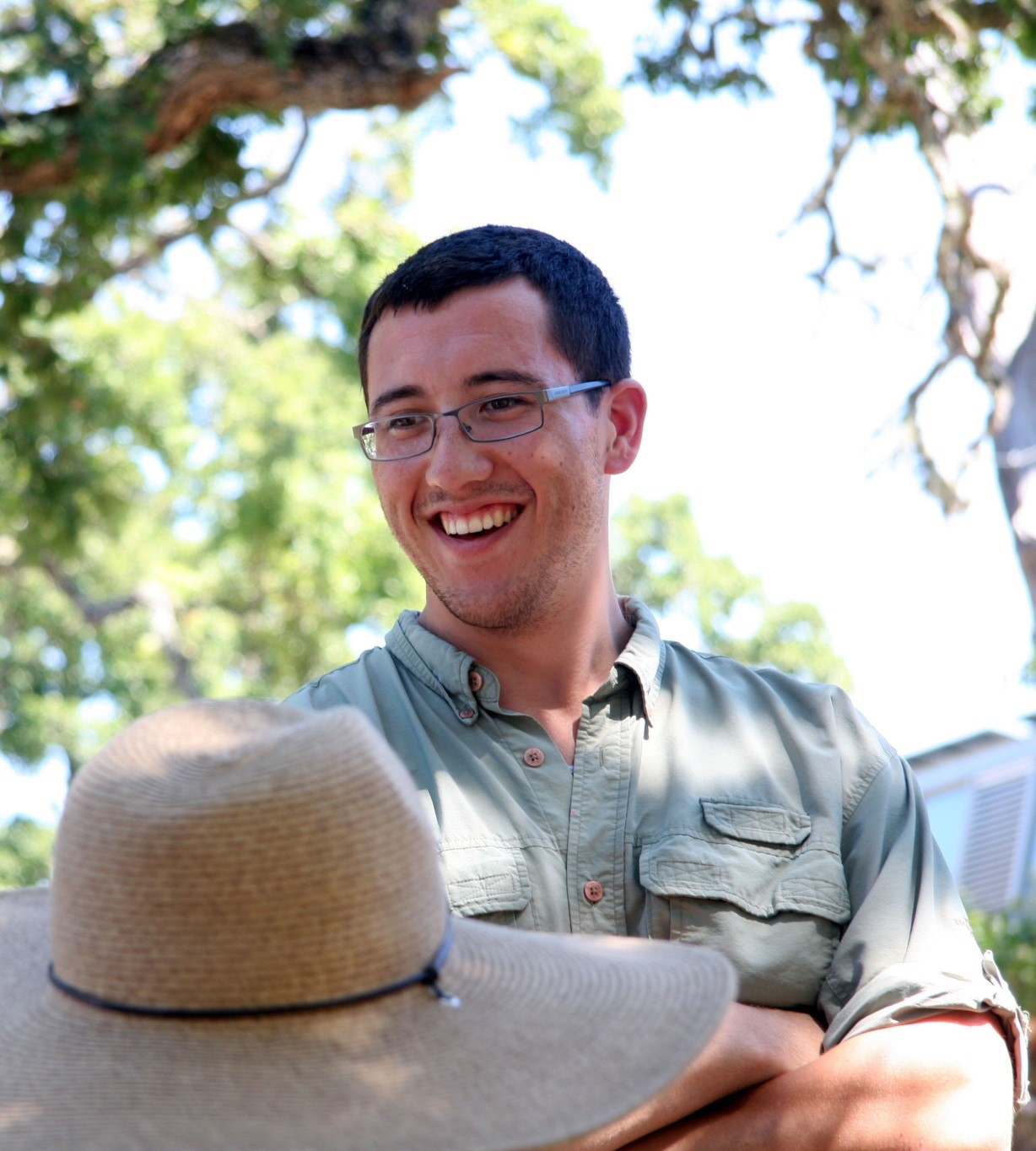 Koji Lau-Ozawa is a UCLA Chancellor’s Postdoctoral Fellow in the Institute of American Cultures. His research focuses on the archaeology of Japanese diaspora and their intersections with Indigenous lands as well as heritage practices around wartime memory. He received his PhD in Anthropology from Stanford University, MA from San Francisco State University, and undergraduate degree from the University of Edinburgh.
Koji Lau-Ozawa is a UCLA Chancellor’s Postdoctoral Fellow in the Institute of American Cultures. His research focuses on the archaeology of Japanese diaspora and their intersections with Indigenous lands as well as heritage practices around wartime memory. He received his PhD in Anthropology from Stanford University, MA from San Francisco State University, and undergraduate degree from the University of Edinburgh.
Contact Michelle Jacobson
Phone
The Cotsen Institute of Archaeology labs will be open to the public on November 14th, 2024 from 4:00pm to 6:00pm followed by a lecture by incoming faculty Dr. Koji Lau-Ozawa. His talk, titled Blossoms in the Desert: Japanese American Incarceration on Indigenous Lands, will take place in the Lenart Auditorium.
RSVP here or use the QR code below
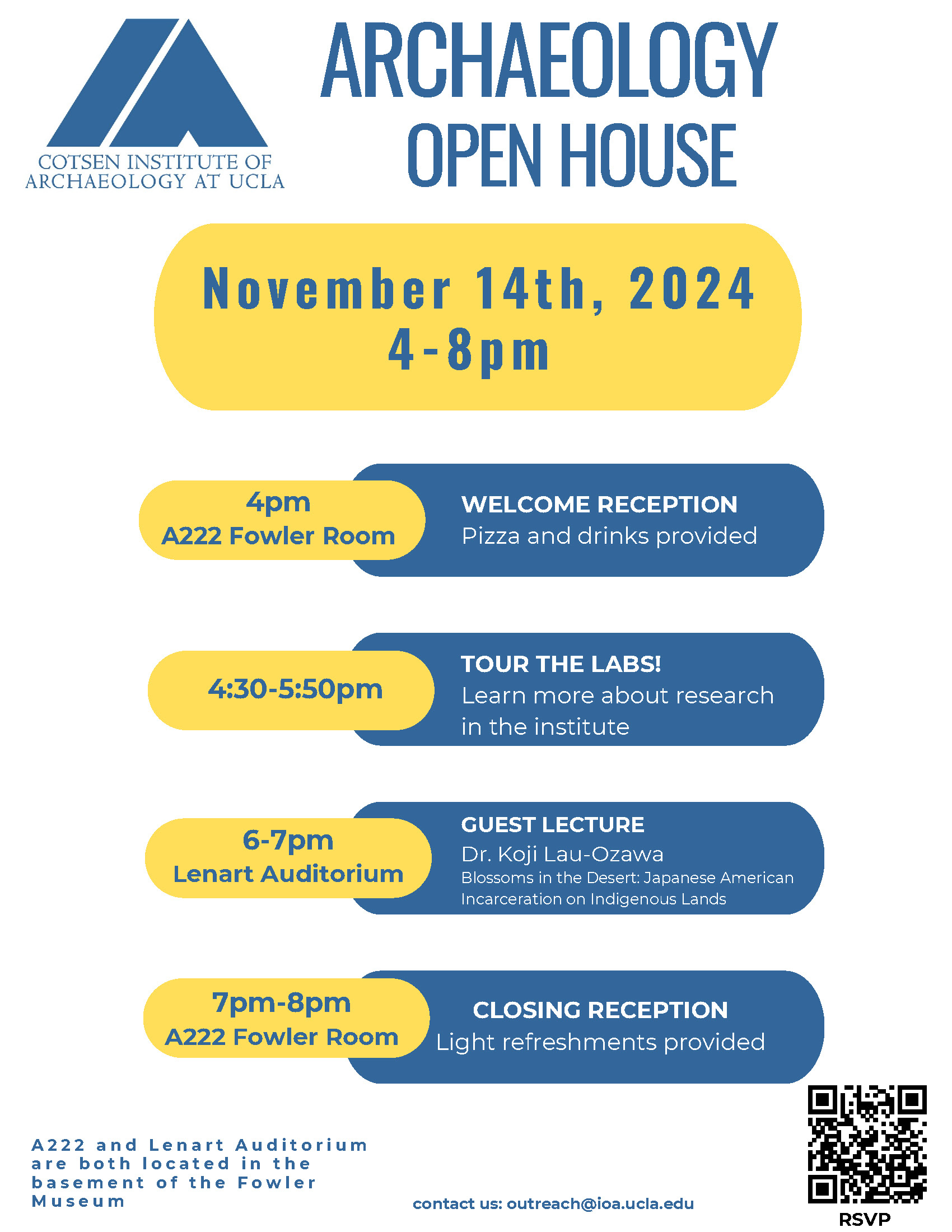
Contact Victoria Newhall
Phone
- ‹ previous
- 4 of 50
- next ›



